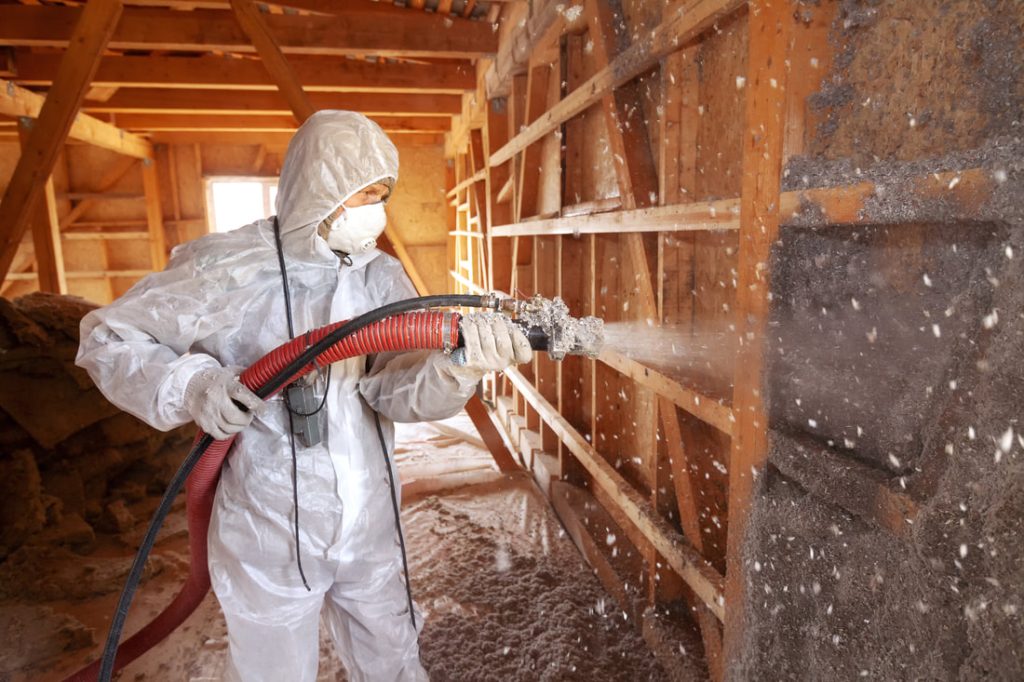Eco-Friendly Insulation – How Spray Foam Insulation Helps Reduce Your Carbon Footprint
In the ever-evolving landscape of sustainability, eco-friendly insulation solutions have become a focal point for homeowners and businesses alike. Among these, spray foam insulation stands out as a versatile and effective option with significant benefits for reducing carbon footprints. At its core, spray foam insulation is composed of two main components – polyurethane and a blowing agent. When these materials are combined, they undergo a chemical reaction that results in the expansion of the foam, allowing it to fill gaps and seal spaces effectively. This seamless coverage not only provides superior insulation but also contributes to energy efficiency by minimizing air leakage, which can account for a significant portion of heating and cooling losses in buildings. One of the key ways spray foam insulation aids in reducing carbon footprints is through its high R-value. R-value is a measure of a material’s resistance to heat flow the higher the R-value, the greater the insulating effectiveness. Spray foam insulation typically has a higher R-value per inch compared to other insulation materials like fiberglass or cellulose. This means that less material is needed to achieve the same level of insulation, reducing overall material consumption and environmental impact.

Additionally, the airtight seal created by smart home insulation at pembroke pines helps to decrease the reliance on heating and cooling systems, thereby lowering energy consumption and greenhouse gas emissions associated with traditional HVAC systems. By reducing the energy demand of a building, spray foam insulation plays a crucial role in mitigating the carbon footprint associated with fossil fuel-based energy generation. Furthermore, spray foam insulation is known for its durability and longevity. Unlike traditional insulation materials that may degrade over time or be susceptible to moisture damage, spray foam forms a rigid barrier that is resistant to mold, pests, and moisture infiltration. This durability translates to less frequent replacement or maintenance, reducing the need for additional resources and minimizing waste over the lifespan of a building. Another environmental benefit of spray foam insulation lies in its ability to improve indoor air quality. The airtight seal created by spray foam helps to prevent the infiltration of outdoor pollutants, allergens, and moisture, thereby promoting healthier indoor environments. This can lead to reduced reliance on air purification systems and contribute to overall occupant well-being.
Furthermore, spray foam insulation can be manufactured using renewable and recycled materials, further enhancing its eco-friendly credentials. Manufacturers are increasingly exploring alternative blowing agents derived from natural sources or recycled materials, reducing the reliance on chemical compounds with high global warming potential. When considering the environmental impact of insulation materials, it is also essential to factor in the embodied carbon the total carbon emissions associated with the manufacturing, transportation, installation, and disposal of the product. While spray foam insulation may have a higher embodied carbon compared to some traditional materials, its superior performance and energy-saving benefits often offset these initial emissions over the lifetime of the building. Spray foam insulation offers a compelling solution for reducing carbon footprints in the built environment. Its high R-value, airtight seal, durability, and potential for using renewable and recycled materials make it a sustainable choice for enhancing energy efficiency and indoor comfort while minimizing environmental impact.

